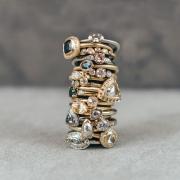Most people know about the harmful effects ultra violet (or UV) light can have on the skin. But whilst people regularly use sun cream for protection, is the same consideration being given to exposure of the eyes? In normal day-to-day life, the eye...
What is UV radiation?
It comes from the sun and in simple terms it is the part of light that is just outside our ability to see. The eye is an amazing structure but can only see certain wavelengths of light - pretty much the colours of the rainbow. They range from violet and blue to orange and red. These colours differ as do their energy levels, violet having the most energy and red having the least within this range.
As you would expect, the higher the energy value the higher the damage that they can cause. Ultraviolet being at the higher end is responsible for the most dramatic effects where it causes sunburn and skin cancer. At the lower end, infrared gives warmth.
UV rays can be split up into three groups - UVA, UVB and UVC. UVC has the highest energy level and is the most damaging. Thankfully all UVC radiation is blocked by the ozone layer. However, as the ozone layer reduces, we are exposed to more and more UVB and the less damaging UVA. The eye cleverly deals with these in different ways and has evolved to cope with their damaging effects. However, evolution just cannot keep pace with the effect that man has had on planet Earth.
The short-term effects
Photokeratitis is the main issue here. It may sound complicated but is the eye equivalent of sunburn. This occurs when the eyes are overexposed, in the short term, without proper UV protection. It is a delayed response (like sunburn), normally eight to 24 hours after the event. The eye becomes painful, red, waters a lot and is very light-sensitive. There is a similar effect from welding 'arc eye'; this normally has no long-term damage but is very painful and is easily preventable.
Medium/long-term effects
UVA and UVB rays both damage the human lens. It is painless, accumulative and permanent, and can lead to cataracts, which is the leading cause of blindness in the world. UV radiation can also cause skin cancer around the eyes, on the lids and even on the eye itself.
What can we do?
Nearly all good-quality sunglasses offer fantastic protection. However, they mainly reduce the UV exposure from the front, and depending on their fit, exposure is still possible from above and from the sides, reducing their effectiveness. The best solution is to use a wrap-around sunglass such as Oakley.
Transitions/photochromatic lenses offer the ideal day-to-day solution. They give 100% UV protection and adapt to the ambient level of light, going completely clear when out of the sun. You can also buy contact lenses which offer UV protection.
When buying sunglasses, make sure that they offer sufficient UV protection. If not, then the eye can be exposed to even more UV radiation than normal; behind a poor-quality sunglass lens, the pupil will have dilated and hence let though more damaging rays than normal.
Finally, hats can also provide great protection from UV exposure. The best type has a wide brim and will help with exposure from above and, to a lesser degree, from the sides. BY ALISON HARWOOD
Alison Harwood is an optometrist and Director of Optika Opticians, 31 The Sovereign Centre, Weston-super-Mare, BS23 1HL, tel 01934 642909.


























